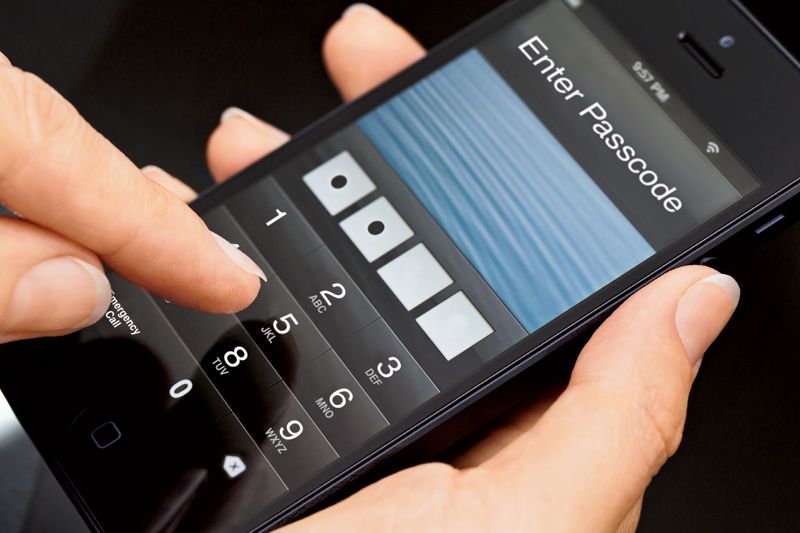Outsmart Smartphone Thieves—Tips to protect yourself from identity theft
By Gail Osten
August 2013 View more Finance
 You shred sensitive documents, stop your mail when you leave town, and use a home safe to store important papers. So, when it comes to your smartphone, shouldn’t you be as prepared to avoid financial identity theft?
You shred sensitive documents, stop your mail when you leave town, and use a home safe to store important papers. So, when it comes to your smartphone, shouldn’t you be as prepared to avoid financial identity theft?
According to www.identitytheftfixes.com, every year 10 million Americans become victims of identity theft, with an average of $1,800 to $14,000 of hard earned money stolen. In addition to losing money, it takes an average of 840 to 1,300 hours for victims to get their credit reports and personal information back in order.
We love our smartphones. They simplify our lives. Every contact in your social universe, all emails, photos, videos, tweets, Facebook posts, a couple dozen apps—including some that connect us with our financial institutions, and other personal financial information—can be conveniently stored in that one simple hand-held computer. However, if you’re not careful, your phone could also be a convenient one-stop-shop for identify thieves looking to cash in on your inattention.
Incidentally, your phone doesn’t have to be stolen for your identity to be stolen. Remember, you can connect automatically to any open Wi-Fi network as long as you have connected to it before. You don’t know who may be on a network monitoring your online activity and waiting to attack your financial identity.
TIPS TO PROTECT YOURSELF:
- It’s one more step to get to your info, but always have a password to access your phone. A thief can’t get to your personal information without a password. Make sure your phone is set to lock within minutes of you leaving it unattended.
- We all have passwords to countless Websites, but as convenient as it may be, do not save your passwords or account information on your smartphone. In addition to storing passwords at home, look into a password management service so you can remember one password and then mix up the passwords you use for other services.
- If you use online banking, get assurances that the bank’s firewall is strong enough to withstand viruses or security breaches. Then sign up for automatic email alerts which are triggered when a predetermined dollar amount is withdrawn from your account.
- If your bank or credit card providers communicate with you by text, either erase all texts immediately after you get the needed information or disable texting altogether. Texts won’t include your account number, but they do include other sensitive data such as addresses, phone numbers, etc. that may be available on your phone.
- Be careful about adding apps from any company other than trusted publishers. Third-party applications sometimes disguised as a game, device patch, or other useful applications are one way cybercriminals can attack smartphones. Once installed, malware can initiate a wide range of damage.
- Strongly consider buying a security program to protect your smartphone that allows you to remotely lock down your phone and erase all information immediately at the sign of any security breach.
- If your phone is lost or stolen, immediately make a police report. If you have GPS on your phone, the police can track down your phone. Secondly, contact your phone company to suspend or cancel your service. Thirdly, you should change email, online banking and other account passwords. If your phone is company-issued, contact your IT department. They may be able to remotely delete your data.
- Finally—and I know this one is difficult for hard-core tweeters—be alert to random tweets from people you don’t know. Only click on tweets from real friends, not just people who have signed up for tweet alerts or messages. If you get tweets that seem suspicious, it could indicate someone is trying to steal a piece of your identity.


